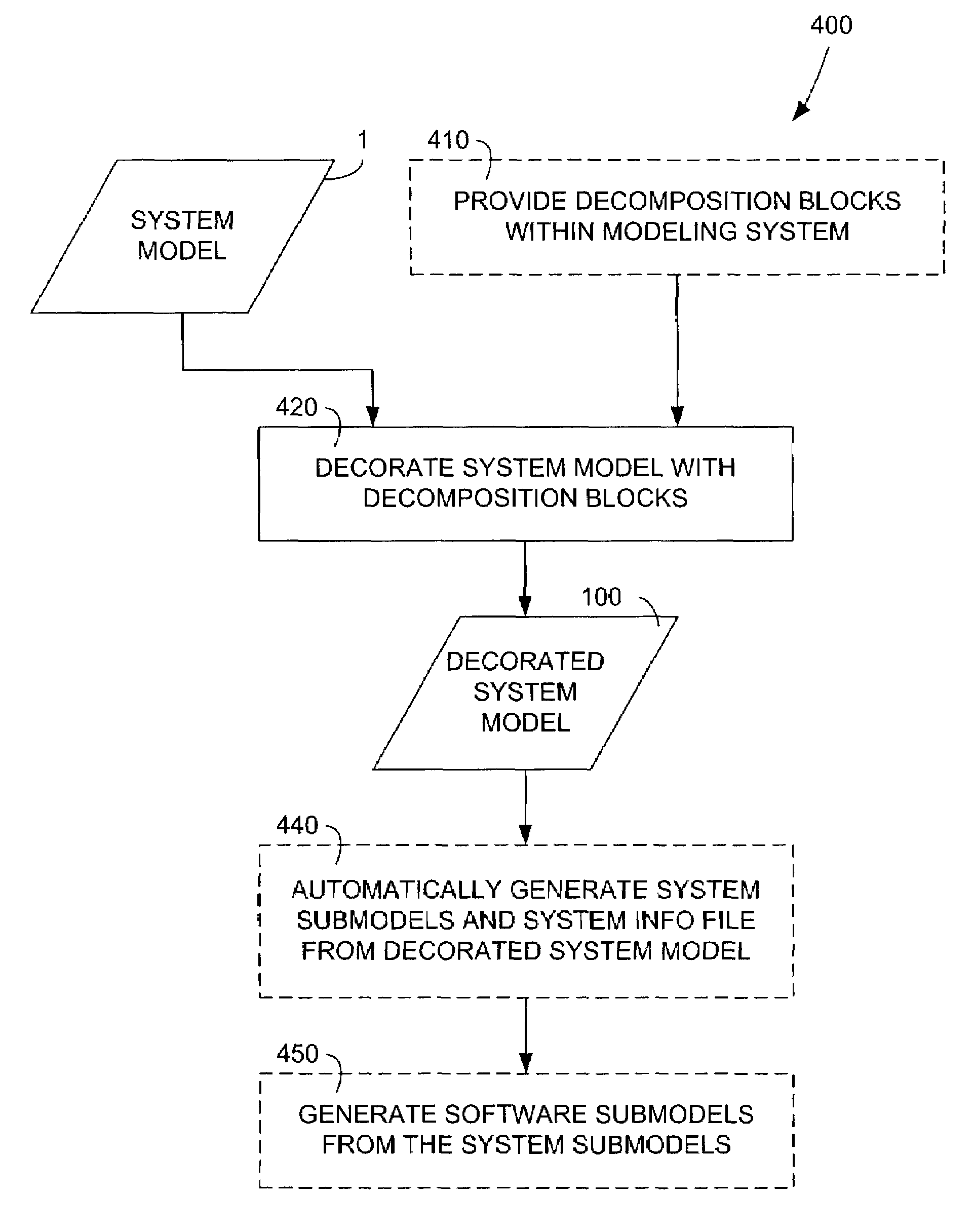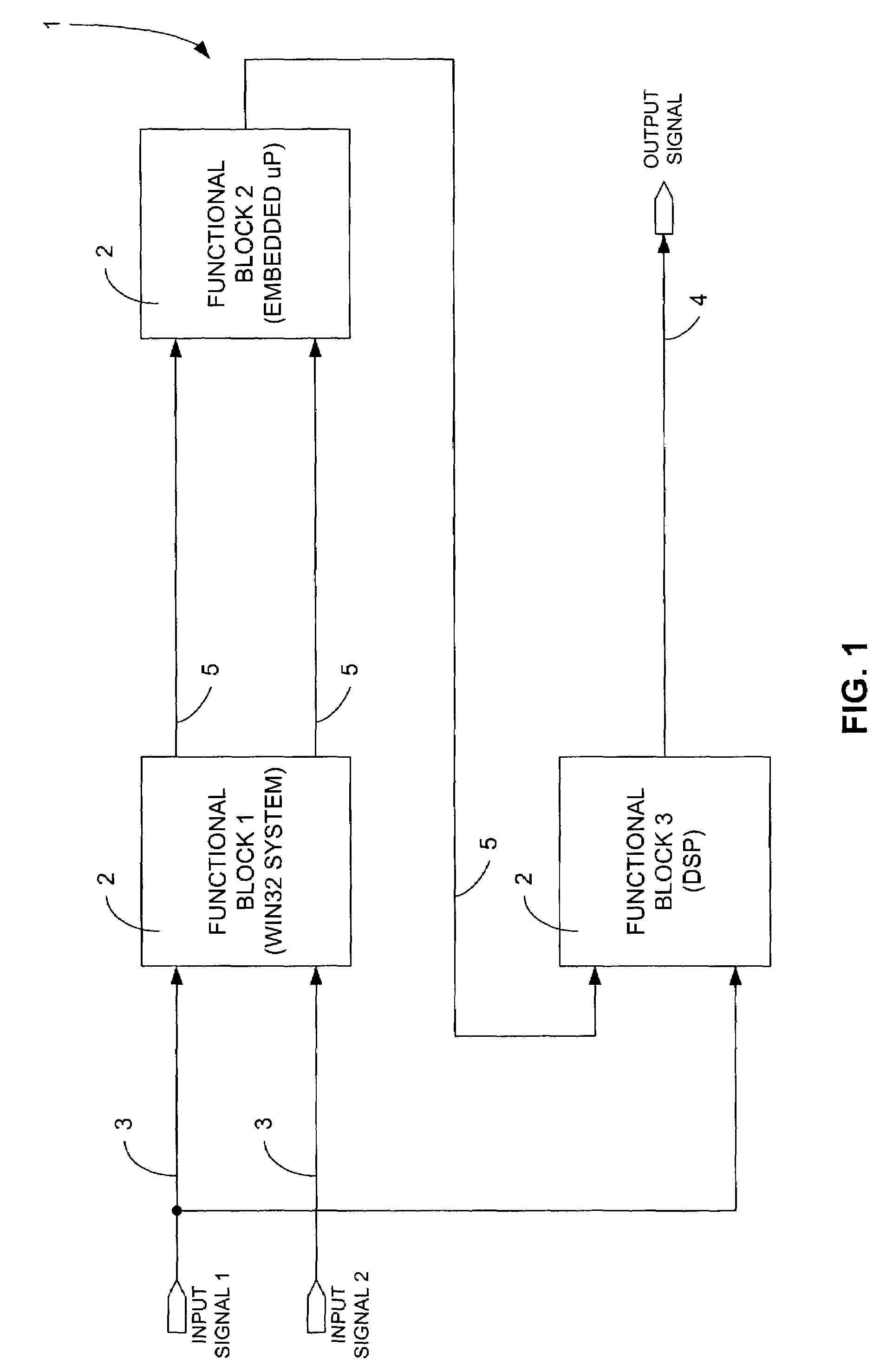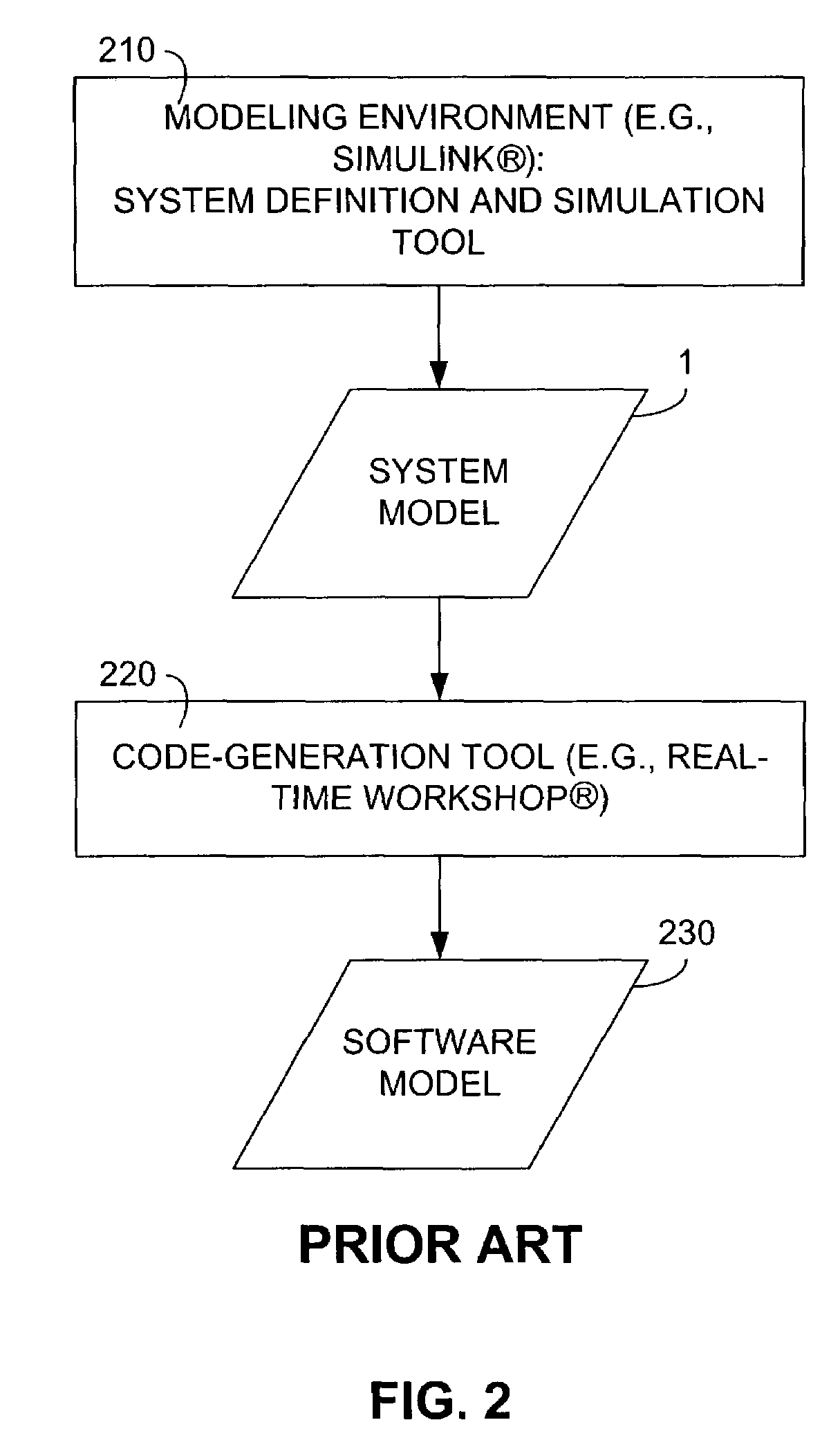Method for automatically decomposing dynamic system models into submodels
a dynamic system model and submodel technology, applied in the field of automatic decomposition of dynamic system models into submodels, can solve problems such as the possibility of errors being introduced into the submodel, the simulation to halt prior to successful completion, and the speed up of more complex simulations, so as to facilitate communication and avoid deadlock
- Summary
- Abstract
- Description
- Claims
- Application Information
AI Technical Summary
Benefits of technology
Problems solved by technology
Method used
Image
Examples
Embodiment Construction
[0022]Embodiments of the invention, as described in detail below, utilize as a starting point the Mathworks Simulink® modeling environment described above. However, other simulation model environments may be employed in a similar fashion as the basis for alternate embodiments of the present invention.
[0023]Furthermore, the software of alternate embodiments of the invention may be manifested in varying levels of integration with the associated modeling environment. For example, alternate embodiments may include distinct follow-on software that is installed separately from the modeling environment. Other embodiments, like those specifically discussed herein, may involve software developed independently, but integrated within the modeling environment. Also, other embodiments may represent code that is highly integrated to the point that such code is indistinguishable by an outside observer from that which comprises the remainder of the modeling environment.
[0024]FIG. 4 shows an integra...
PUM
 Login to View More
Login to View More Abstract
Description
Claims
Application Information
 Login to View More
Login to View More - R&D
- Intellectual Property
- Life Sciences
- Materials
- Tech Scout
- Unparalleled Data Quality
- Higher Quality Content
- 60% Fewer Hallucinations
Browse by: Latest US Patents, China's latest patents, Technical Efficacy Thesaurus, Application Domain, Technology Topic, Popular Technical Reports.
© 2025 PatSnap. All rights reserved.Legal|Privacy policy|Modern Slavery Act Transparency Statement|Sitemap|About US| Contact US: help@patsnap.com



